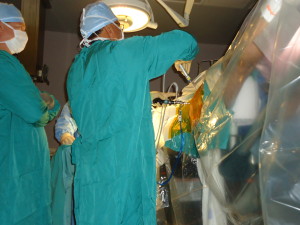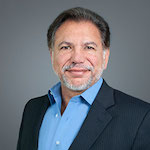Adult Stem Cell Therapy & Platelet Rich Plasma
The Benefits of Stem Cell Therapies
 Stem cells offer the ability to heal yourself with the
Stem cells offer the ability to heal yourself with the
best medical technology modern medicine can offer. Stem
cell therapy is a symbol of 21st century technology and if
used in the correct and right ways has the potential to
completely revolutionize medicine altogether.
Currently, Dr.Bennett uses stem cell induced
therapies to repair joints including; elbows, shoulders and
knees. There are many benefits for using stem cell
induced therapies to repair these joints; including much
shorter rehabilitation periods, following the procedure
patients can usually return to normal right after the
procedure, rather than dealing with the sometimes lengthy
rehabilitation periods from invasive traditional surgical
procedures. Stem cells actually restore degenerated
tissue while simultaneously providing pain relief, stem
cells have the potential to reverse many diseases by
replacing damaged tissue with healthy new tissue. Stem
cell injections contain hyaluronic acids, which lubricates
joints and tendons easing the pain from a patient’s injury
while helping to restore mobility. Stem cell therapies
usually only take about a day, cutting down treatment time
rapidly. Traditional surgeries bear the risk of infections and
other potential hazards, stem cell induced therapies bear
none of these risks.
Stem cells are feared by many people as only a risky
new “scientific” procedure not yet proven to work for the
general population. While stem cells are a new procedure,
successful treatment of injuries on patients using stem cell
induced therapies has repeatedly shot down these fears
and proven their critics wrong time and time again. Stem
cells offer more than just exciting new ways to treat many
diseases and injuries, they can also help with researching
new ways to fight viruses and infections and can help lead
the way to find vaccines and cures.
A team of scientists at the University of Cambridge in
the UK recently used stem cells derived from the skins of
cystic fibrosis patients to generate what they call “minilungs”.
Basically what they created are organoid models of
the distal part of lung tissue, the part that forms the
airways where gases are exchanged with the
environment. They can use this set of “mini lungs” to
further study and learn about the key aspects of serious
diseases such as cystic fibrosis and other serious lung
diseases. As these set of “mini lungs” are grown from
human cells and mimic a set of human lungs they are
much more reliable and can provide much more accurate
results rather than using lungs from mice or other animals.






